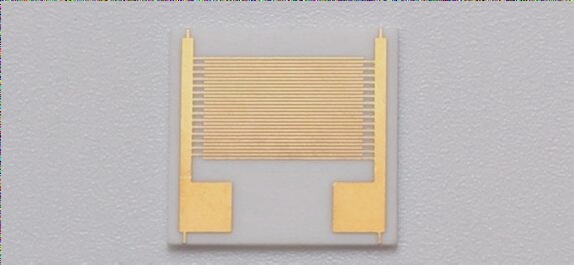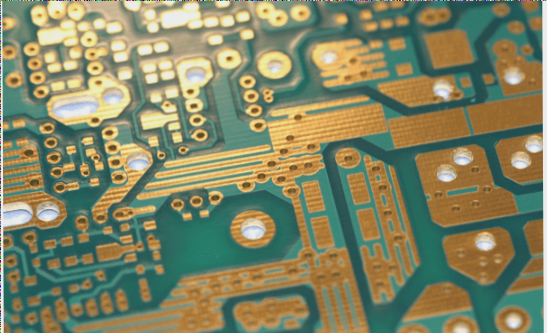
1. **High Precision Ceramic Circuit Boards Using the DPC Process**
High-precision, high-integration ceramic circuit boards predominantly utilize the DPC (Direct Print Circuit) film technology. This process enables the creation of intricate lines, with line widths and spacings as small as 0.05 mm or even less. It is suitable for applications such as soldering pads, electrodes, and gold wire connections. The DPC thin-film ceramic circuit board typically features a thin metal layer, facilitating precise wiring and meeting other production requirements.
2. **DBC or AMB Processes for High Thermal Conductivity and Insulation Base Plates**
The DBC (Direct Bonded Copper) or AMB (Active Metal Brazing) processes are primarily used for base plates requiring high thermal conductivity and insulation. Copper is often utilized in the form of copper-clad sheets with thicker copper layers, which necessitate strong metal bonding forces. For applications with more demanding metal bonding requirements, the AMB process is employed, typically using aluminum nitride or silicon nitride ceramics as the AMB ceramic cladding. The AMB process achieves strong metal bonding, with thicknesses below 800 µm.
3. **Complex Multi-Layer Interconnection Processes: HTCC and LTCC**
For complex multi-layer interconnections, the HTCC (High-Temperature Co-Firing Ceramic) or LTCC (Low-Temperature Co-Firing Ceramic) processes are required. For instance, high-frequency ceramic circuit boards used in high-power devices predominantly employ the LTCC process. LTCC enables the integration of passive components within semiconductor devices, making it well-suited for high-frequency communication applications.

1. If we consider the differences between HTCC (High-Temperature Co-Fired Ceramics) and LTCC (Low-Temperature Co-Fired Ceramics):
2. Both HTCC and LTCC exhibit a high print allocation ratio for one-off firing, controllable dielectric layer thickness, smooth surfaces, and an unlimited number of layers.
3. HTCC ceramic materials primarily include alumina, mullite, and aluminum nitride. HTCC ceramic powders do not contain glass materials. Conductive slurries are made from high melting point metals such as tungsten, molybdenum, and manganese. The sintering temperature ranges from 900 to 1000 degrees Celsius. Due to the high sintering temperature, HTCC cannot utilize low melting point metals like gold, silver, or copper, but instead requires refractory metals like tungsten and molybdenum. These refractory metals have lower conductivity, which can lead to signal delay, making HTCC less suitable for high-speed or high-frequency micro-assembly circuits. However, HTCC substrates offer advantages such as high structural strength, thermal conductivity, chemical stability, and high wiring density, making them suitable for high-power micro-assembly circuits.
4. HTCC High-Temperature Co-Fired Ceramic PCB:
5. To achieve high sintering density at lower temperatures, amorphous glass, crystallized glass, and low melting point oxides are typically added to the components to facilitate sintering. Glass-ceramic composites are representative of low-temperature co-fired ceramic materials. Other materials include crystallized glass, a combination of crystallized glass and ceramics, and liquid sintered ceramics. Metals used in LTCC are highly conductive, such as silver, copper, gold, and their alloys (e.g., Ag-Pd, Ag-Pt, Au-Pt). The sintering temperature ranges from 1600 to 1800 degrees Celsius. LTCC utilizes metals with high conductivity and low melting points, making it ideal for RF, microwave, and millimeter-wave applications. LTCC is mainly used in high-frequency wireless communication, aerospace, memory, drivers, filters, sensors, automotive electronics, and other fields.
6. The above provides an overview of ceramic circuit boards as described by WellCircuits and outlines different industry requirements for their production. To develop and manufacture ceramic circuit boards, enterprises and research institutions must select the appropriate type of board and production process based on the specific requirements of the application environment.



